25 Facts and FAQs About Travel Documents: A Detailed Checklist for International Travel

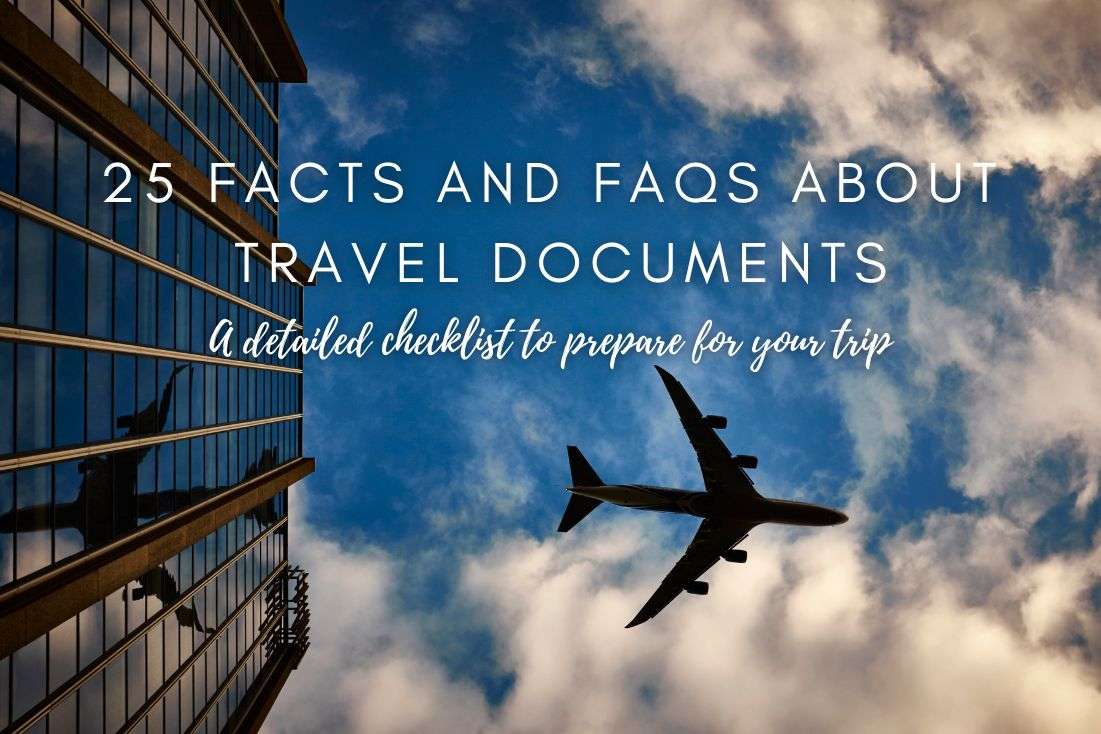
Today, let’s take a look at all of the travel documents you could need for international travel. From passports and visas to insurance and proof of onward travel, this article will be your checklist for your next trip.
What documents do I need to travel internationally?
Ah, a simple question with no simple answer. Travel conditions vary vastly depending on what country you are from (or rather, which country’s passport you hold) and where you’re heading to. I’ll give as much information as possible for everyone, but let you know where you’ll need to dig a little deeper for specifics based on your citizenship. An American going to Europe will need to prepare different documents than a Spaniard heading to Australia.
We’ll talk about things like:
- how to know if you need a visa,
- that the soon-to-be-launched ETIAS is EU’s version of USA’s ESTA
- what the Schengen zone is and who can travel freely in it
- if Covid certificates are still a thing,
- and how to get all your travel documents organized before you go.
At the end of this article, I’ll add a detailed “international travel documents checklist” that you can use to make sure you’re not forgetting anything before your big trip. Just make sure to start checking it a lot sooner than the night before you’re off to the airport—some of these documents take time to get your hands on!

Each country has its own conditions for allowing you to cross its borders. Here I am at Japan's Nikko National Park.
For starters, this is a basic list of travel documents that you may need for your international trip:
- Passport, ID
- Driver’s license, international driver’s license
- Visas
- Travel insurance
- National park or hiking permits, tickets to some museums and landmarks
- Credit cards
- Proof of onward travel
Passports and IDs
The OG travel document: your passport. But they’re not all created equal.
1. A driving license isn’t a form of ID

On my way to Rainbow Mountain in Peru
I know a lot of you reading this are from the USA (but other places will benefit from this information, too), so let’s throw one thing out there straight away: in many countries of the world, a driver’sst license isn’t considered a form of ID. In most EU countries, for example, citizens are issued national identity cards, and driver’s licenses are used just to prove that you do, in theory, know the rules when the police stop you for speeding.
Keep your passport or a national ID card with you at all times to prove your identity when traveling in a foreign country.
2. Your passport is your main travel document
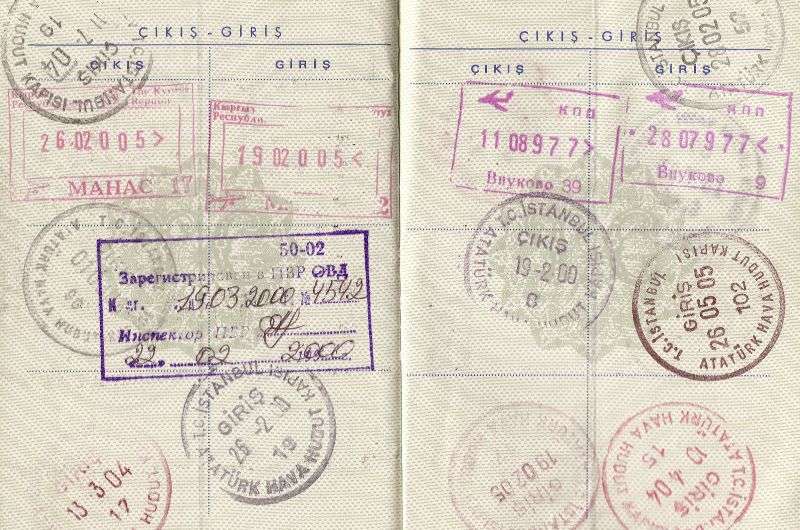
Don’t forget your passport!
For most international travelers, having your passport with you is a no-brainer. An ID card or driver's license may be enough to identify yourself within a country, but crossing into a different country is an entirely different story. You need a passport at most borders around the world, though there are exceptions and the rules at air and land borders can vary.
Sometimes, people traveling within their own region can use ID cards to do so. For example, EU citizens traveling within the EU only need their national ID cards, many South Americans can visit each other’s countries with their ID cards, and the same goes for some countries in Africa.
US Americans can travel without their passports too, to places like Mexico, Canada, and Puerto Rico. But, in Mexico and Canada specifically, this rule applies only when you enter through a land border, and even then, you may need at least a passport card.
In the end, if you plan on traveling, it saves you a huge headache to just get a passport. That way, you always have a good enough travel document ready to go.
3. Can you travel within Europe without a passport?
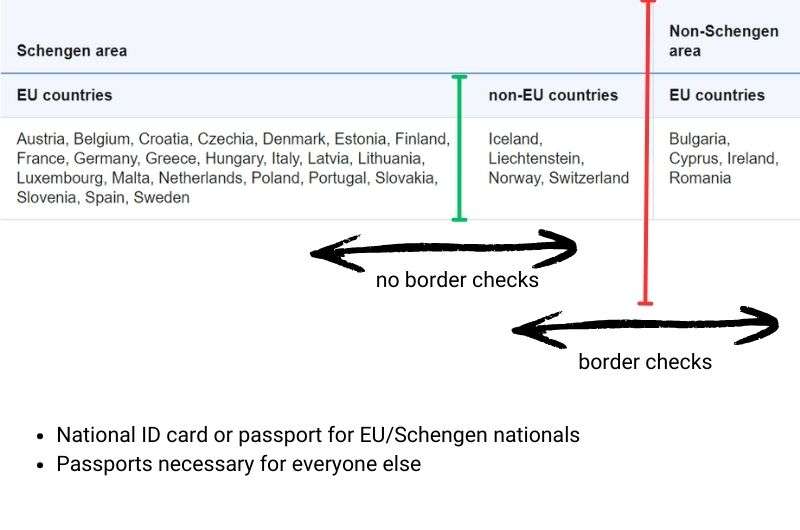
EU/Schengen nationals just need an ID within Europe, everyone else needs a passport. Where they’ll actually check your passport is another story...
Assuming we’re talking about the European Union, you always need a passport to travel within Europe unless you’re a citizen of the EU/Schengen area. Yes, UK folks too. That’s Brexit for you.
EU/Schengen nationals don’t need a passport to travel within the EU/Schengen—an ID card is enough. (Unless you’re from Denmark, because you guys’ ID situation is comical, but I assume you’d know this.)
Note that there’s a thing called the EU and another thing called the Schengen area. Schengen is a borderless area where you can travel between states much like in the US. But not every country in the EU is a member of Schengen (and vice versa), and that’s where travel between European countries gets a little tricky.

The UK outed itself from the EU, so now we all need passports to go there (unless you’re from Ireland—you get special treatment). Here I am enjoying the summer in Scotland, haha
Within Schengen, there are no border checks unless something out of the ordinary is happening, which means you don’t need to present a travel document when crossing between countries. But you do still need to have the appropriate travel document with you and present it if asked, they are still separate countries!
When traveling to Bulgaria, Cyprus, Ireland, and Romania, which are part of the EU but not part of Schengen, there are border controls, and you will need to present your travel document always. Again, passports for non-EU folks, national IDs or passports for EU folks.
The UK isn’t in Schengen or the EU, so there are borders and passports needed in every case.
4. Fun fact: Do you know the strength of your passport?

I may not be from Japan, but I’ve been to Japan, the country with one of the strongest passports in the world!
Speaking of passports… they are not all created equal. You can look at the Henley Passport Index to see easy it is to travel the world with passports from different countries, it’s pretty interesting. The index tells you how many countries a passport allows you to travel to visa-free.
Here’s a summary for you:
- Singapore and Japan have the world’s strongest passports,
- Western Europe follows closely behind
- Australia is in joint 6th place with New Zealand and Switzerland, with the USA in 7th place with Canada and my very own Czech Republic
- After that come Eastern European countries, then South America
- South Africa comes in at 54th place
- And then it’s a mix of Asia and Africa until the very end
For those looking to enhance their travel freedom or explore options for second citizenship that could provide stronger passport privileges, residency experts like the Global Residence Index can offer valuable insights into citizenship by investment and golden visa programs that might open doors to greater global mobility.
5. Check passport requirements before you travel

Watch out for the validity of your passports or you won't fly!
Just having a passport may not be enough for you to travel—there can be rules on its validity and even the number of empty pages. Although, if your passport is getting very full, you probably aren’t reading this article.
Sometimes, your passport needs to be valid for a minimum of 6 months after the date of your planned departure, others only require 3 months, and some countries just need your passports validity to cover your travel dates. For example, to get an ESTA for the United States, your passport needs to be valid for 6 months after your travel dates. But for Europe’s ETIAS (more on that below), 3 months is enough.
Honestly, if my passport were to expire that soon, I’d be a nervous wreck. You never know what can happen during travel, from health issues to political crap, so you want to be sure you have a document that’ll allow you to move around the world for longer than a few weeks.
Some places also don’t allow travel with a passport older than 10 years, so keep that in mind as well.
If your passport isn’t caught up with modern times and doesn’t include your biometrics, well, you may need a new one, stat. For some places, like the USA, they won’t let you in without a biometric passport. It’s just a regular passport but it has an embedded chip with all kinds of juicy info about you in it.
And about those empty pages: this may sound like it's just for people that need a visa, but sometimes, it’s even just for a stamp. If the immigration agent can’t find a spot to place their stamp, you could be turned away.
Tip: If you’re really excited for your first passport stamp and just can’t wait, check out this gallery of all stamps and visas.
6. Children need travel documents, too
I don’t know who needs to hear this, but children are humans, too! They are not your property or a carry-on and they do, in fact, need their own travel document to travel internationally. I’ve heard of way too many parents surprised that even babies need passports to travel internationally…! Umm… duh? Some people shouldn’t be allowed to procreate.
Visas and entry requirements
Depending on which country’s passport you hold, you may need to jump through some hoops to get your visa, or you might not need to do much more than show your passport and smile.
7. Do Americans need visas to travel?

Being born in the USA isn’t an automatic pass to travel around the world freely
Yes, Americans need visas to enter some countries, just like the rest of us! I really hope you didn’t think that you can travel freely while everyone else needs to check entry requirements when they travel, it’s just silly to me as a non-American. But maybe I’m just cynical.
The easiest way to check if you need a visa to travel as a US citizen is go to the US Department of State website to the section called “Learn about your destination”. You find your destination country and it gives you a quick overview of entry requirements and restrictions, as well as travel advisories for that country. Take those with a huge grain of salt, btw, unless you are prepared to hide under your bed and never step foot in the big, bad world.
8. How to know if I need a visa?
The combination of your citizenship and your destination country are going to determine if you need a visa for travel. There is no universal answer to this question.
The best thing to do is check the official website of your country’s Ministry of Foreign Affairs (or equivalent), they usually have a list of countries and the entry requirements for your nationality. Alternatively, check the website of the embassy of your home country that’s located in the country that you’re traveling to. They should have a consular/visa section online as well, or will at least have a link to where you can find official information. Don’t trust anybody else.
There are a lot of websites out there that provide lists of countries’ visa requirements, but you always need to double-check on an official website. This is really important especially if you’re getting your information from a visa website or a travel agency—they don’t care about you, they care about making money. Get the official information before you start any type of visa application process in order to prevent unnecessary costs.
Tip: If you are a US citizen, check check the official "Learn about your destination" tool. For UK citizens, here’s where you can check entry requirements.
9. How to get a travel visa for the United States?
The United States has something called the Visa Waiver Program that means that it you’re from one of the 36 enrolled countries and are planning a trip to the US for up to 90 days, you do not need a visa. All you need to do is apply for an ESTA (“Electronic System for Travel Authorization”), which is done online and is easy to get if you aren’t a drug dealer or otherwise suspicious person.
I recommend getting your ESTA approved before you book plane tickets or any non-refundable travel arrangements, just in case you end up being unwanted or something. ESTA approval is quick, within 72 hours max. Be aware that you could end up needing to provide extra documentation, which would make the process longer, so just get your ESTA as soon as you know you want to go to the US. You get your ESTA issued online, so all you need to do is print it out and you’re good.

Seeing this famous lady requires a little extra preparation (and a lot extra for some nationals)
Enrolled countries are: Andorra, Australia, Austria, Belgium, Brunei, Czech Republic, Denmark, Estonia, Finland, France, Germany, Greece, Hungary, Iceland, Ireland, Italy, Japan, Latvia, Liechtenstein, Lithuania, Luxembourg, Malta, Monaco, Netherlands, New Zealand, Norway, Portugal, Republic of Korea, San Marino, Singapore, Slovakia, Slovenia, Spain, Sweden, Switzerland, and United Kingdom.
If you need an actual visa for the United States, the process is lengthier and more expensive, and you’ll probably made to feel like you need to prove that you’re not planning on moving to the United States and living the American dream. You will get your US visa placed into your passport after you’ve been approved. The process takes about a month. You’ll first need to go to a US Embassy for an interview, which can be quite the field trip if you live far away from one. As with the ESTA, it is recommended to have your visa approved prior to booking any plane tickets or other travel arrangements (for accommodation proof, hop on booking.com and get a fully refundable hotel booking just in case). Check your local US Embassy website for details, or see the US Department of State website for general (and overwhelming) information.
10. What is Schengen and is it the same as the EU?

As an EU citizen, I can easily drive to the Austrian Alps whenever I feel like it. No borders, no stress
Schengen is a group of 27 countries who decided to become buddies and comprise a borderless area that allows free movement inside of it. Many, but not all, EU countries are within Schengen, and some that aren’t EU are part of it as well. This is the full list: (EU countries first) Austria, Belgium, Croatia, Czechia, Denmark, Estonia, Finland, France, Germany, Greece, Hungary, Italy, Latvia, Lithuania, Luxembourg, Malta, Netherlands, Poland, Portugal, Slovakia, Slovenia, Spain Sweden, and 4 non-EU countries: Iceland, Liechtenstein, Norway and Switzerland.
If you’re traveling between countries in the Schengen area, you won’t encounter any border checks (unless some exceptional shit is going down and they are temporarily reinstated).
EU countries that are not part of Schengen, and therefore you need to get checked at the border are: Ireland, Bulgaria, Romania, Cyprus.
The fact that you don’t need to show a passport within Schengen doesn’t mean you don’t need one at all, because you still need your travel documents to be allowed in. Which travel documents do you need for Europe? Are there visa requirements? Keep reading…
11. Do I need a visa for Schengen? How to get a travel visa for Europe?
If you’re from an African or Asian country traveling to a Schengen country, chances are high that you need to apply for a Schengen visa (here’s the full list of countries that need a Schengen visa). Otherwise, you likely fall into the visa-free category (see if you find your country on this list), meaning you can just rock up to any external border and demand to be let in, haha.
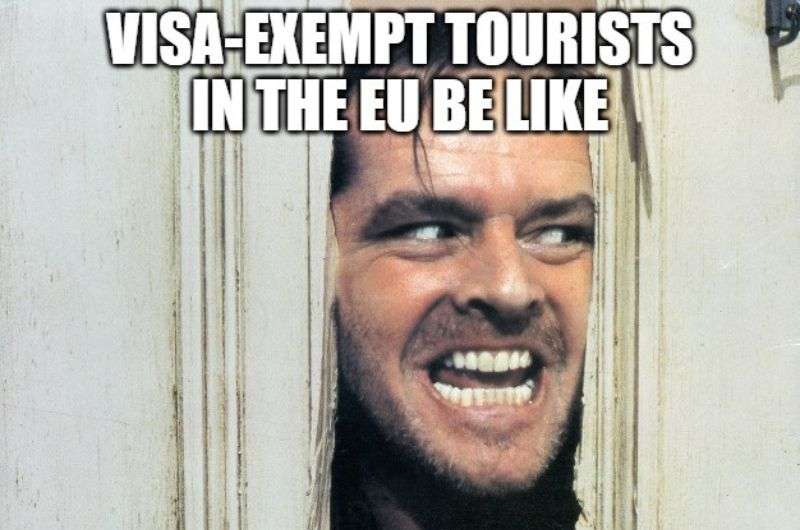
Starting in 2025, the Schengen visa process is planned to be purely electronic, but for now, everything is still done on paper, meaning you need to submit an application at the embassy of the country you intend to visit (in your own country), and you’ll get the visa put into your passport once approved. You’ll need 2 pages in your passport for this, and unless you like the adrenaline of not knowing whether all your travels plans will fall apart at the last minute, apply well in advance. They officially only need 2 weeks for the approval process, but that’s cutting it really close. You can read the requirements and details on the EU’s official website.
Fun fact: Sweden, Norway, Malta, Belgium, and France have the highest visa denial rates at above 20%. Malta even shut down the travel dreams of 36% of applicants! On the other end of the spectrum is Iceland that basically accepts everyone with open arms, and Lithuania, Latvia, and Finland at around 8–9% rejection rate. And just in case you’re brewing up a plan to apply to an easy country just for a higher chance of success, well, that’s called “visa shopping”, and it’s a big no-no that could have you never coming to Europe again.

Belgium is one of those countries that is not very benevolent when it comes to entry
For citizens of non-European countries that don’t need a visa (including US citizens—I know a lot of you guys are reading this, so I thought I’d save you the suspense of not knowing if this applies to you), the only travel document you need to enter the Schengen zone is a passport that’s not older than 10 years and is valid at least 3 months after your planned trip duration. You can also be asked about your travel plans, they may want to see hotel bookings (you can always get a fully refundable hotel reservation on booking.com and use that) or proof that you have enough funds to be going on this type of vacation (basically proof you aren’t planning on staying indefinitely, trying to make money doing god-knows-what in the EU).
Changes coming soon! Rules for travel for visa-exempt countries will change in 2025. See the next section below for ETIAS information.
The visa exemption and the Schengen visa grants you access to Schengen for a maximum of 90 days within any 180-day period. That means that at any given time, you cannot have been in the Schengen zone for more than 90 days in the past 6 months. You can come in, leave, and come in again, but always make sure to add up your days, because the border people don’t like anyone to overstay their welcome.
If you are a citizen of a Schengen or EU country, I assume you already know that you don’t need a visa to travel within Europe. Just jump over to my articles about booking a hotel room and packing for international travel, because that’s all you need to get going on your trip (first time flying? I have an article for you, too!). Have fun!
12. What is ETIAS? New European travel authorization coming in hot!
Being launched in mid-2025 is ETIAS, the European Travel Information and Authorisation System. Much like the USA’s ESTA, this will be an electronic travel document that you’ll need to apply for and get approved before you travel to Europe if you are from a visa-exempt country.
The ETIAS will stay valid for 3 years, so that EUR 7 application fee can stretch a very long way if you use it for multiple trips! The “90 days in the last 180 days” stay duration limit will remain intact.
Here’s all the current info on ETIAS.
13. How to get a travel visa for any country
I’ve talked a lot about traveling to the USA and Europe, but what about the rest of the world? While there’s no general rule for getting visas that applies to the whole world, there usually is a pretty standard process of how the process goes: submit application including travel plans, pay the fee, get the visa in your passport (or, if it’s an eVisa, get an electronic visa letter), and off you go.
Here’s a more comprehensive list of what the visa application process can include:
- Your first step in figuring out the visa process for any country is checking the official website of the embassy of the country you wish to visit, or the website of your country’s Ministry of Foreign Affairs (or equivalent). Don’t go blindly believing websites of travel agencies or visa companies, they may not have your best interest in mind. Some of these places happily charge an arm and a leg for visas that you can easily get for next to nothing upon arrival.
- Once you know the requirements for the visa, you’ll always need a valid travel document, meaning a passport. A lot of the time, passports are required to be valid for up to 6 months after your trip is scheduled to end, so always check that expiration date.
- Fill in your visa application. You’ll usually provide your personal information, including answering questions about how politically exposed you are, if you’re a convicted felon, and if you like to shoot people in your free time.
- Detail your travel plans. This can be as simple as a rough outline of where you’re planning on going or as specific as your intended day-by-day trip plan and showing hotel reservations.
- You may need to prove that you have sufficient funds for travel. That can look like showing off your bank statements, having your bank issue a letter saying you do have money but don’t feel like showing off your bank statements, or providing credit card information—every country may accept different proof, so do your research.
- Take out travel insurance if you’re required to. This rarely ever happens, but Schengen is one place that does require it if you’re applying for a Schengen visa, so keep that in mind.
- Some countries will ask you to provide a letter of invitation, especially if you state in your application that you’re visiting somebody or if you’re going for a specific event.

Japan? No problem! Many countries don’t need a visa for trips up to 90 days
Remember, if you’re a citizen of the US, EU, or any other “first world” country, you oftentimes don’t need a visa at all. You are either exempt altogether or can apply for a simple visa on arrival. Speaking of which…
14. What’s a visa on arrival and how do I get it?
Some countries want to let everyone in, but also want to collect those visa fees, hence the “visa on arrival” (yes, that is my personal reasoning behind this type of visa). It’s like a hybrid between no visas and visas.
All you need to do is check the visa requirements ahead of time to see if you qualify, and if you do, just present whatever they ask you to once you get to your destination (which usually isn’t much). Most importantly, have the money to pay for it on the spot (cards are usually accepted, but double-check this before you go).
Visas on arrival can be annoying, because you often need to stand in a long line right after you get off an already long flight, so frustration can run a little high (and kids go bonkers). If you qualify for visa on arrival, the documents you need to present are commonly just a passport and maybe proof of where you’re staying (get your hotels on booking.com folks, I always do) and that you have a ticket out of the country, so nothing too complicated. The idea is that everyone that wants the visa on arrival gets it unless they are idiots that think they can bend the rules.
15. Can I travel on a one-way ticket?

If you want to go to Cusco, Peru, you need to prove that you plan to leave as well
You can always try and hope you’re let in! No, seriously—a lot of immigration control agents will want to see proof of onward travel to make sure you’re not planning on staying in their beautiful country indefinitely, so make sure you have a way to show you’re heading out again within the legal timeframe if that’s something that the country requires.
A plane ticket, train ticket, ferry ticket, bus ticket will all suffice. It doesn’t need to be a ticket to your home country, any country will do, as long as it shows you’re leaving.
Examples of countries that require proof that you’ll get the heck out: Peru, UK, the United States, Thailand, Singapore, Taiwan, Brazil, Costa Rica, Mexico… and the list goes on.
Airlines are most often the ones responsible for checking that you fulfill this requirement, so be ready to present your proof at check-in. The reason for this is that if they let you on the plane and then immigration denies you entry into the country, the airline has the responsibility to fly your sorry ass back home.
Driving licenses and rental cars
There’s no better way to get around a country than getting your own set of wheels. You get so much freedom to go when and where you please, and you don’t need to be crammed into a train/bus/van with a ton of strangers.
16. Who needs an international driving license?
An international driving permit (IDP) aka international driving license is a United Nations-regulated document. It’s a small paper booklet that includes the same information as your national license translated into several languages that allows you to drive in countries other than your own.
There are several types of IDPs depending on which country you’re from and where you’re visiting (based on international agreements), so don’t just assume that once you have one, you are good to go anywhere in the world. They also have limited validity (1 or 3 years).
In all honesty, you rarely ever need to use an IDP if the country you are visiting can read the writing system of your home country, i.e. you’ll be fine in the US if you’re from the EU, but you certainly need an IDP in Japan.
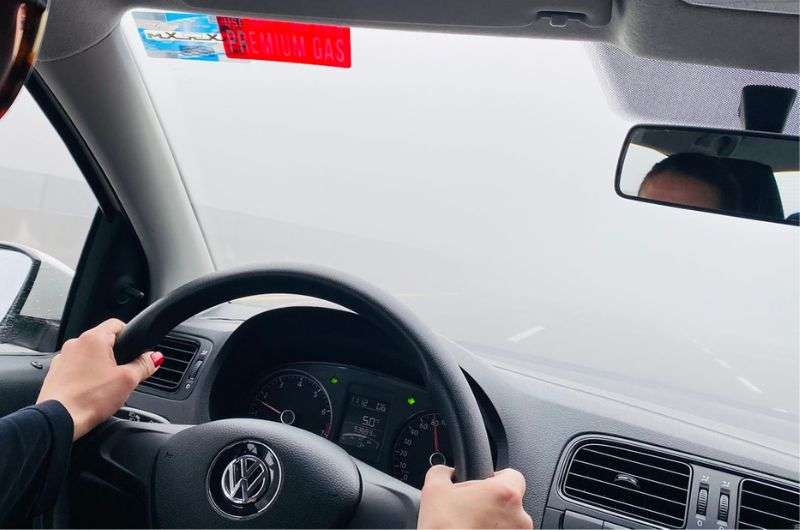
Well, the international driving license did not prepare me for driving in conditions such as the zona de niebla in Mexico!
There’s one authority responsible for issuing IDP in every country. You can check this website to find yours, or ask Google. Where you apply differs depending on where you are from. It’s usually done in person at your town hall or your country’s automobile association, but, like if you’re from the UK, it can also be the post office. In the US, stop by the AAA, and in some countries, like Mexico, you can apply online and then just pick it up when they summon you. In places where you need to apply in person, they are issued within minutes right on the spot.
You need to get your IDP before you travel, and you can only have it issued in your home country. You’ll always need to present your national driving license, a couple of photos, and an ID (sometimes even your passport), to get it. Check your local requirements before applying.
If you’re renting a car abroad, check with your rental company as well. Sometimes they’ll want an IDP even if it isn’t mandatory in the country.
How to use an international driving license? Most importantly, it’s no good on its own, so remember to always carry it along with your national driving license. You just present it to the police officer that stops you for speeding just as you would in your home country (you know, puppy eyes and all).
17. A debit card won’t get you a rental car
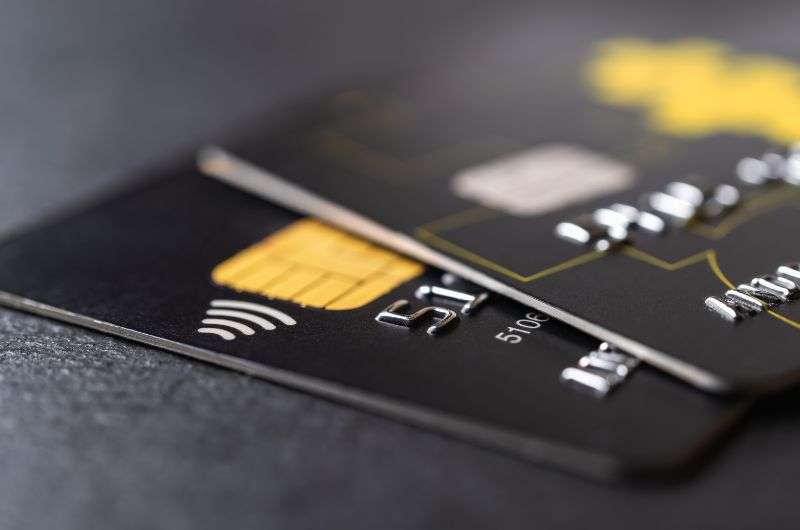
This isn’t a travel document per se, but I do want to touch on one little plastic annoyance that can cause a lot of issues when traveling: credit cards! Car rental companies almost always require a credit card (with a high enough limit), not a debit card. The simple reason is that they use the limit on the credit card as a guarantee in case you damage the car.
The credit cards has to be in the name of the main driver and will be pre-authorized when you rent your vehicle. Some rental companies allow debit cards, but then slap you with an extortionate mandatory insurance payment, and others won’t even talk to you unless you have a credit card. So really, credit cards all the way when renting a car.
Health and travel insurance
Traveling is fun and all, but that doesn’t mean you can’t get sick or injured! And your bags may get lost, your phone stolen, your rental car may run into a wild pig in South Africa...
18. Do I need travel insurance?
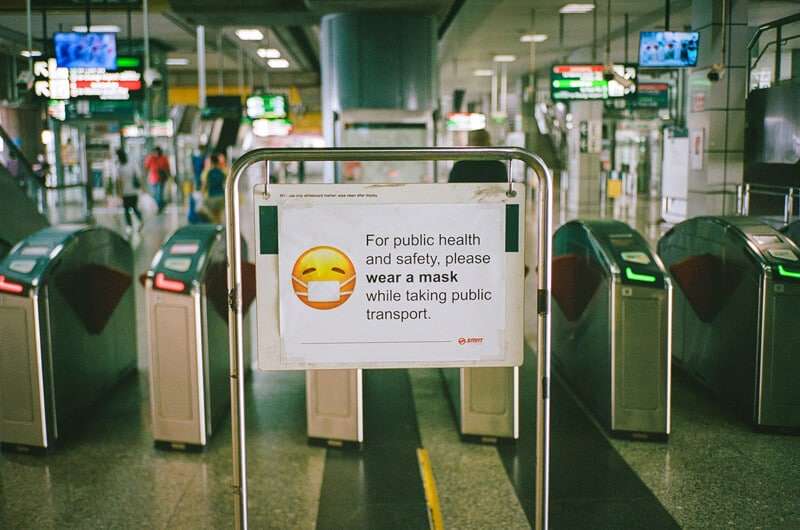
Remember these times?
Yes! Always. It’s a safety net that turns potential "oh no" moments into mere blips on your adventure radar. Otherwise, those little blips cold turn into a huge red number on your account statement. A twisted ankle in Germany or a bad stomach bug in Peru doesn’t need to cost you more than the taxi ride to the hospital.
Make sure to read the fine print on dental and covid coverage, because some insurance companies like to omit those or put very strict rules on them.
But travel insurance can also serve you in case you lose your luggage, accidentally smash somebody’s camera (out of shear excitement at a viewpoint perhaps), or if life simply throws you a curveball—if you need to cancel your trip due to unforeseen circumstances, insurance cushions the financial blow.
Then there’s things you don’t really want to think about, like repatriation… Sounds fancy, right? It's like a free ticket home, but not the fun kind. If something serious happens, and you need to return to your home country for treatment, travel insurance has you covered. In the grim scenario of, well, not coming back, travel insurance can cover the costs of repatriating your mortal remains. A bit morbid, but practical.
You will need travel insurance for visa purposes in some instances, like the Schengen visa. See the details of that in the next section.
19. How to get travel insurance for Schengen visa
Always check visa requirements before you take out travel insurance, no matter where you’re traveling to. One place that mandates travel insurance is Europe: the Schengen zone to be exact.
The conditions for your Schengen travel insurance are: it must cover emergency medical costs, hospitalization and repatriation (including in case of death). The minimum cover should be of EUR 30,000, it has to be valid for the entire Schengen area and for the whole duration of the stay.
20. Are COVID certificates still a thing?
No. Thank the traveling gods, that is no longer a thing.
21. Travel insurance can cover your rental car, too
I always rent a car wherever I travel, and because rental car companies are some of the shadiest dudes you will deal with on your travels, I advise you to take out your own rental car insurance.
At the very least, do yourself a favor and compare prices, because the amounts that the car rental companies try to charge you are often ridiculous. Rental car insurance can be part of your travel insurance as an extra, so shop around to get the best deal. In some countries, it’s not a matter of if your car will get scratched up or dented, it’s only a matter of when. Getting full coverage can ease the headache oh so very much.
Hiking permits and tickets in advance
Some of your bucket list destinations may include activities or places that require a permit or ticket to be purchased long in advance. It would be a shame if you came all the way to Peru and couldn’t get into Machu Picchu!
22. You need permits and health certificates for some hikes
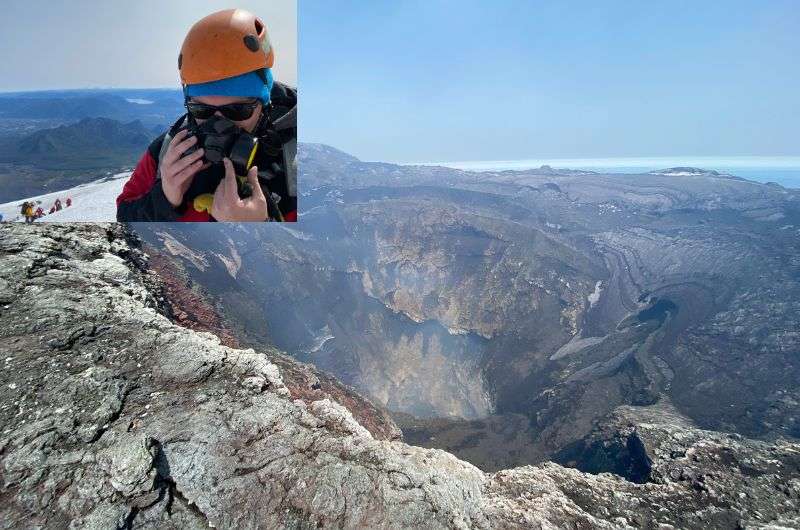
Only a crazy person (read: very experienced mountaineer) would hike Villarrica on their own (but get a permit if you do!)
Not all hikes are created equal, some are just extra extra special, meaning sometimes you need to plan ahead in order to be able to go on them (or they’d just be really crowded without some authority intervention). This is true in places like Fish River Canyon in Namibia or Villarrica volcano in Chile. For these permits, you’ll need to plan in advance, as they can require health certificates from your home country.
Other times, it’s not necessarily a permit you need to get, but you do need to buy tickets or make a reservation up front… in the case of Machu Picchu in Peru or Caminito del Rey in Spain, even months in advance!
23. Get tickets way in advance for the top museums and palaces of the world

The Gravensteen in Ghent and the belfry in Bruges in Belgium... both landmarks I got to see from the outside only because I didn’t get my ticket in advance
And it’s not just natural wonders that you may need to book in up front. There are museums and landmarks that are so popular that without buying a ticket in advance, you’ll either have to wait in extremely long lines, or be left out completely. At the Topkapi Palace in Istanbul or the Alhambra in Spain, you’ll want to have your ticket before you go or else stand for an hour or more in front of the gates in sometimes unbearable heat, with no guarantee that you’ll get in at all. Like me at the Gravensteen in Ghent or the belfry in Bruges, both in Belgium. Had to be content with just staring at those from the outside, taking a photo and leaving. Boo.
Tip: Beware that sometimes you’ll have a ticket that is time-slotted, so be there on time, and always have your passport with you! A lot of tickets are tied to a name, so you’ll need ID.
Whether it’s a permit or a ticket, make sure to print them out and have them with you in your handy dandy travel documents packet. (This may not be necessary for museums and such, but sometimes it’s easier to deal with the ticket person when you can just hand them something and not have to fidget with a phone that keeps locking.
Getting ready to fly internationally
24. You’re not going anywhere without a boarding pass
If you are flying to your destination, you’ll need a boarding pass in order to be let onto the plane. You may want to check in online beforehand, and if you do, you’ll likely get your boarding pass in your airline’s app or by email. But if you’re doing it the old-fashioned way and checking in at the airport, you’ll get a paper boarding pass at the check-in counter. Whatever you do, always have your boarding pass handy, you’ll need it multiple times at the airport.
I have an entire detailed article for first-time flyers, so go check that out if are stepping foot onto a plane for the first time ever. I’ll guide you through every step of the way, from getting to the airport on time to leaving it at your final destination.
25. Preparing your travel documents
Now that you’ve got all your necessary documents gathered, approved, issued, renewed, or dug up form the bottom of the “everything drawer”, you can breathe a sigh of relief! You’re ready to travel!

This could be you (on a boat on Lake Como in Italy, as happy as a kid on Christmas)
What I like to do is have a nice plastic folder where I keep everything nice and safe and handy in my carry-on (btw, do you know how to pack a carry-on?). An extra precaution you can take is email yourself a scan of your passport, visa, and your birth certificate a the very least, but you can add your other ID and driver’s license in there as well. This will be extremely helpful in case your passport or other documents get lost or stolen while traveling and you need to get yourself a new travel document in a foreign country. It’ll still be a huge headache, but at least you have some way to prove who you are and won’t be a traveling John Doe.
Last but not least, here’s a final quick look at what documents you should prep before international travel:
International travel documents checklist
- Passport
- Check if there is a requirement for a certain validity after your trip
- Often cannot be older than 10 years
- May need to be a biometric passport
- Visa or travel permit
- Check visa requirements well in advance (ideally a couple of months minimum)
- Travel permits such as the ESTA (and from 2025, ETIAS) are much faster to get and you can apply online
- International driving permit
- Mandatory in some countries depending on where you are from
- Get your IDP before you leave your home country
- Don’t leave your national driving license at home, they are only valid together!
- Proof of onward travel
- Be ready to present a ticket out back of the country at immigration and at airport check-in
- Mandatory in many countries
- Travel insurance
- Usually not mandatory, but you should never leave home without it. You can get sick or hurt on vacation too, you know
- Mandatory for the Schengen visa
- Credit card
- Good for emergencies, required by most rental car companies
- Check required credit card limit if renting a car
- Permits and tickets
- Some hikes, national parks, and even museums and landmarks require purchasing a permit or ticket weeks or even months in advance
- Boarding pass
- While this may be obvious, remember that some airlines require online check-in and you may charged extra for checking in at the airport (usually true on low-cost carries in Europe and some domestic flights worldwide)
This post contains affiliate links. I earn a small commission if you make bookings through my links, at no additional cost to you. Thank you for your support!










Comments | Thoughts? Give us a shout!